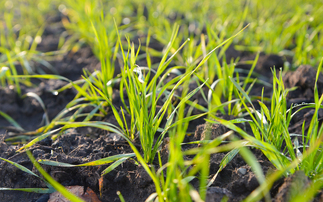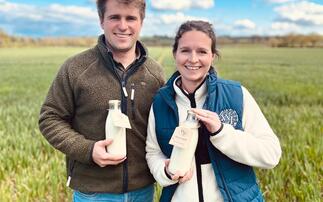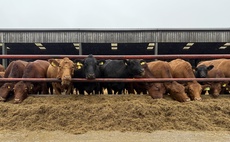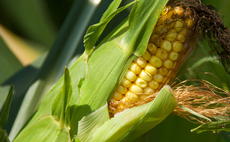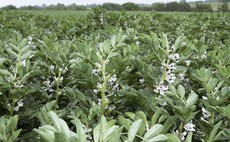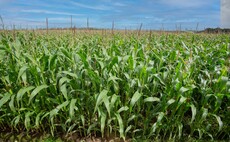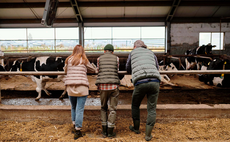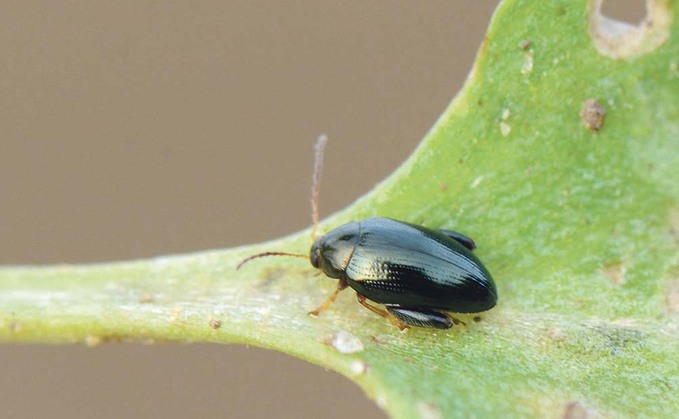
Recommendations from a new report on integrated pest management for cabbage stem flea beetle control offers growers direction for crop establishment, often with little or no additional costs, says Syngenta technical manager Dr Max Newbert, co-author of the AHDB research.
The AHDB CSFB report's findings, including input from the Syngenta iOSR trials and iOSR growers' experiences, focus on conditions and techniques for rapid establishment in the autumn, rather than second guessing the potential timing of CSFB attacks.
Dr Newbert says: "Sowing timing should be dictated by establishment conditions for rapid growth, not around CSFB migration timing due to their variability and persistency." He believes oilseed rape establishment is so condition critical, growers should consider that it may need to be prioritised over wheat drilling when the conditions are right, if the two conflict.
While the first and second week of August has become the norm for OSR drilling, huge variation in weather conditions year to year - particularly soil moisture, but also soil temperatures - makes it impossible to recommend any specific drilling date.
Assessing soil conditions and using weather forecasts can more accurately dictate timely planting, suggests Dr Newbert.
Germination
"The aim is to get all the crop emerged over a short window.
Crops can get past the critical CSFB damage by sheer mass of emerging plants," he says.
The report indicates direct drilling would appear the most reliable technique for establishment, with the intention to plant seed at a consistent 2cm depth, into soil moisture.
While rolling to conserve moisture is widely practiced, and does aid seed to soil contact important for germination and establishment, research has shown that overconsolidation can be extremely detrimental to OSR emergence.
"Understanding soil structures in individual fields and tailoring OSR establishment timing and techniques could pay dividends for consistent emergence and growth," he advises.
Studies have shown larger seed is a significant factor in speed of emergence, with seed greater than 2mm identified as beneficial.
However, consistent seed size is also important to achieve even emergence.
Extending OSR in the rotation to at least one year in four was associated with lower levels of CSFB damage.
Furthermore, a reduced area of OSR onfarm could beneficially enable planting new crop away from the previous year's fields.
Studies revealed a gap of just 50m can be significant in limiting migration of CSFB movement, but ideally leaving a whole field distance would be even more effective.
The report suggests cropping in small fields or blocks of less than five hectares would suffer less damage, or at least trying to keep blocks below 20ha.
One of the most significant techniques identified to minimise CSFB damage to newly sown crops is to leave volunteer OSR in the old crop stubble.
"Waiting to remove volunteers until the new crop is established can minimise the risk of CSFB migration," says Dr Newbert.
Any larvae in volunteers will then be destroyed, halting their lifecycle, which will reduce pressure next season.
Since most new crop should be established by mid- to late August, volunteers can safely be removed in early September without compromising the winter cereal crop, he says.
Companion cropping
Syngenta iOSR trials in Suffolk looking at companion cropping have been validated in the report, highlighting berseem clover and buckwheat sown alongside OSR as effectively reducing CSFB damage and subsequent larvae populations.
The integrated approaches suggested by the report have become ever more important with the increasing incidence of pyrethroid resistance identified in CSFB populations.
In most recent testing the median level of resistance is 60% of populations, says Dr Newbert.
The resistance mechanism is primarily metabolic, so some fluctuation would be expected year on year for numbers and level of resistance, he suggests.
But with migration and movement, the trend is for more widespread issues.
Since all insecticide applications will reduce natural predators, treatments need to be evaluated on growers' knowledge of previous experiences, he says.
"The advice, backed by the report, is if you need to spray, do so once using the best product and application techniques possible.
But if the results are not as good as expected, there is little or no point in continuing with the strategy in that season.
"Growers who have continued to achieve good levels of control in previous seasons should be mindful to follow very best practice to minimise risk of resistance developing," he says.
That means using Hallmark Zeon as the most effective pyrethroid at full rate of 50ml/ha and 75ml/ha for CSFB and flea beetle respectively, if thresholds are reached and resistance is not expected.
Trials have also shown application in the evening and into the night, when the beetles are most active foraging in the crop, can achieve higher rates of control in all populations.
Leaf damage from night application was reduced by 50%, compared to daylight treatment in Syngenta Application Club split field work.
[image_library_tag fa4f9f0e-b523-44e9-8371-70df4e18e02c 200x200 s precision placement drilling at 2cm on a CTF system, using graded seed selected for a TGW of 5.5g plus, aims to assure consistent establishment.
He strongly agrees that establishment conditions are key for planting timing and OSR gets priority for drilling when conditions are right. That takes precedence over CSFB migration timing.
Experience Mr Eglington also strongly agrees with the practice of leaving volunteers from the previous year's crop to hold beetles from migrating onto a new crop.
However, from his experience, he disagrees with growing in small fields or blocks, or the need to avoid planting new fields adjacent to previous year's crop.
In recent years he has worked with ADAS and the Yield Enhancement Network initiative for oilseed rape trials, including grazing off areas of crop with sheep to reduce larvae loading.
It is a technique which has met with some success, although he strongly agrees with the report's findings and iOSR trials that it is a high risk strategy, dependent on spring growing conditions for crop recovery.
More from iOSR

For more on iOSR click here:






